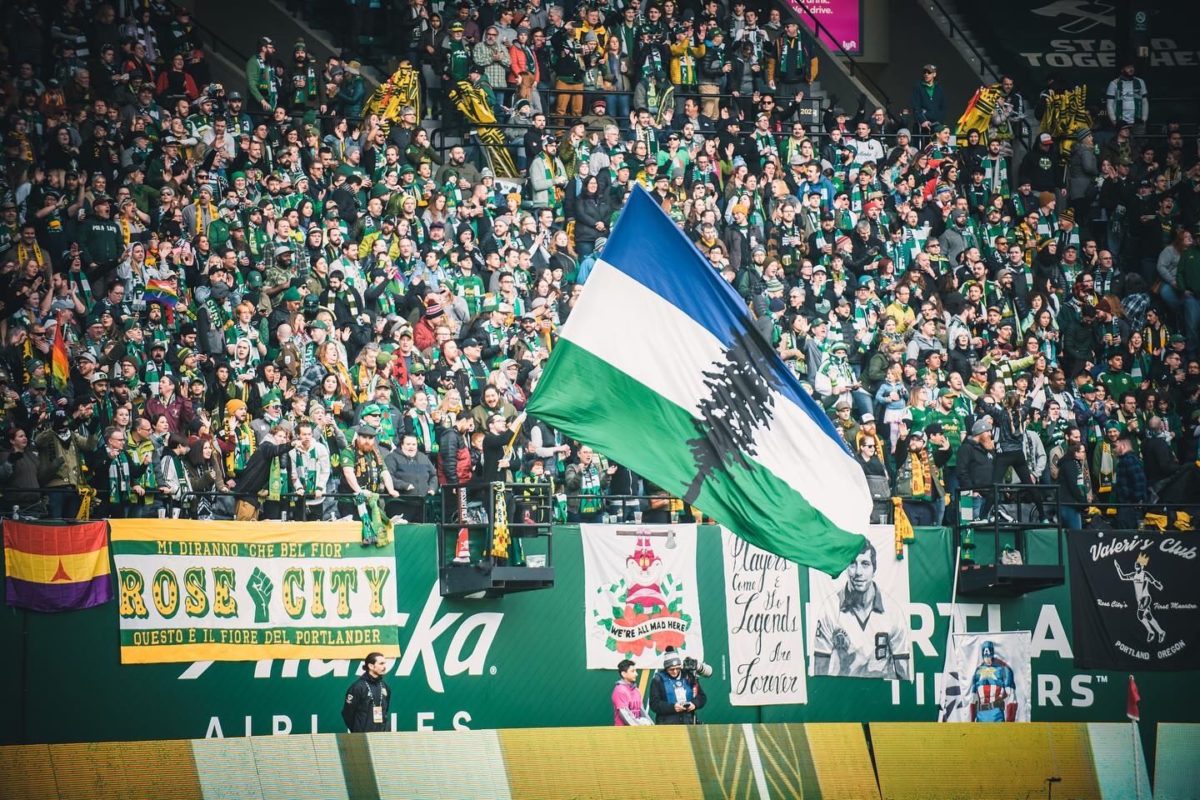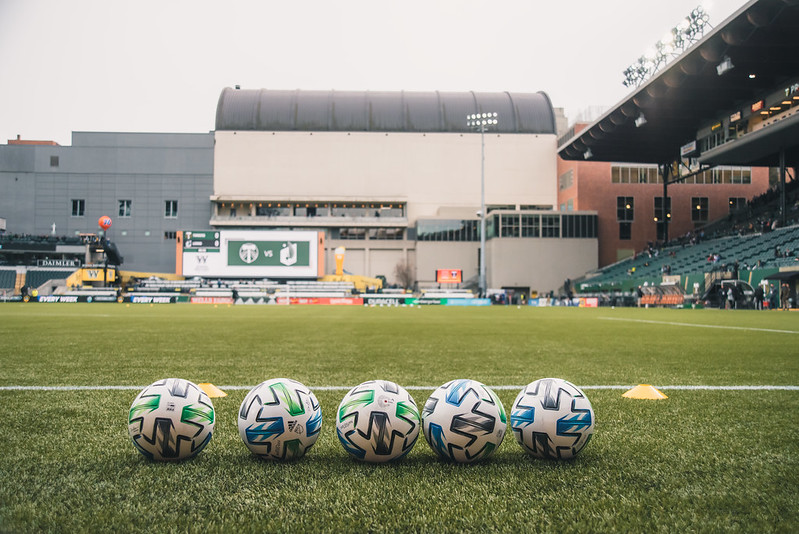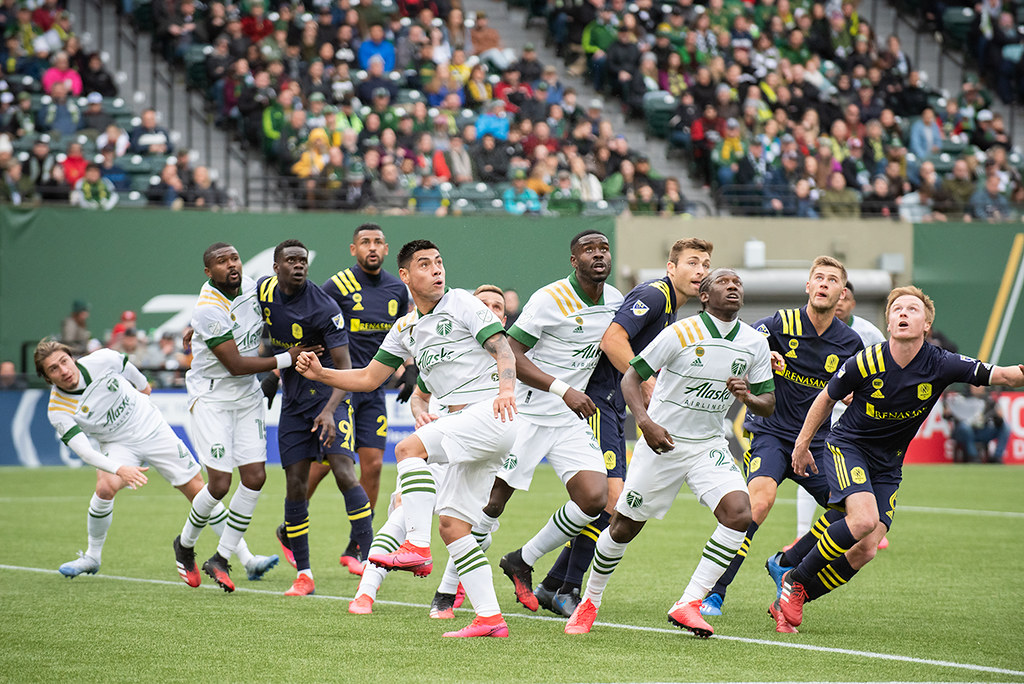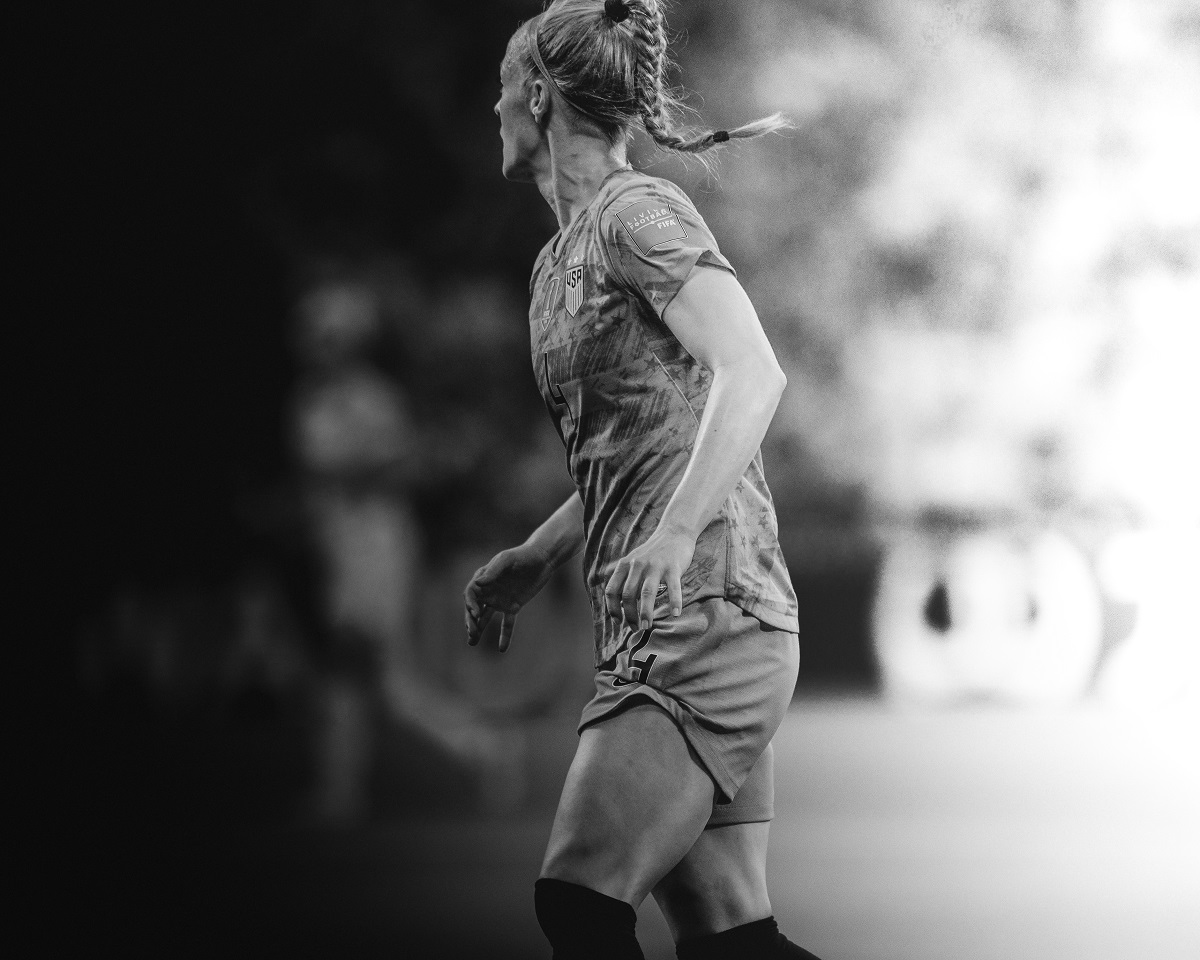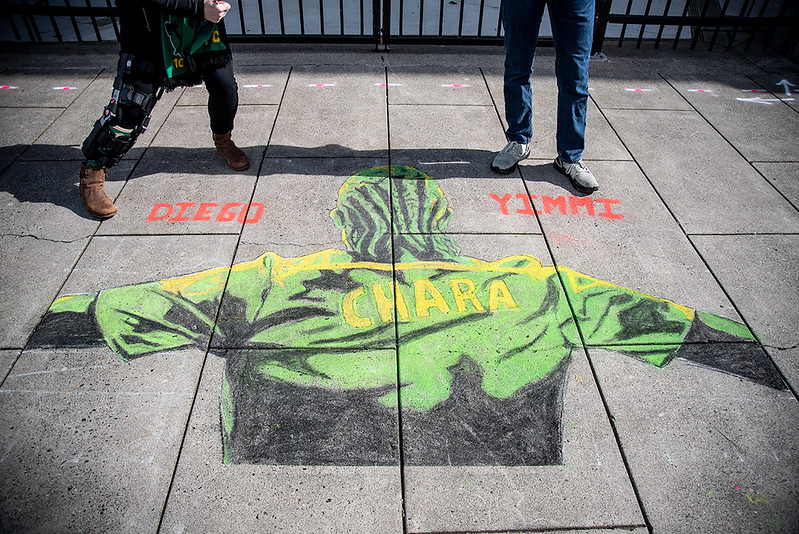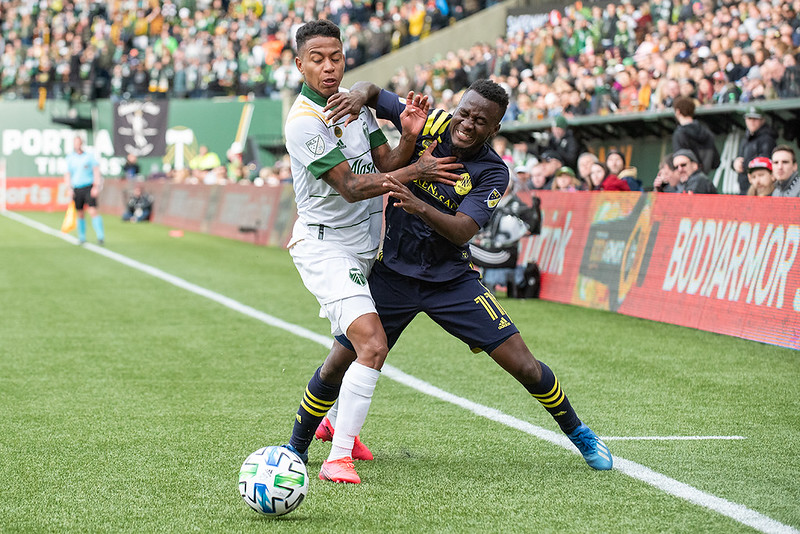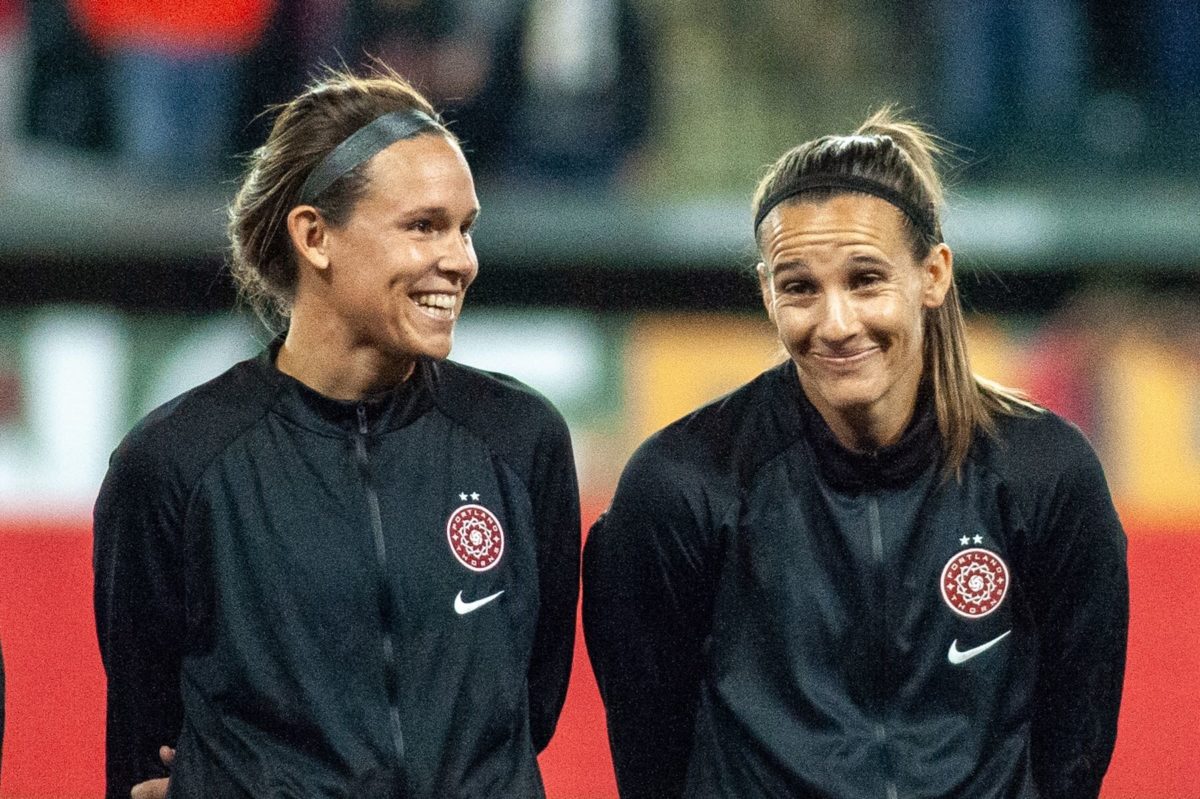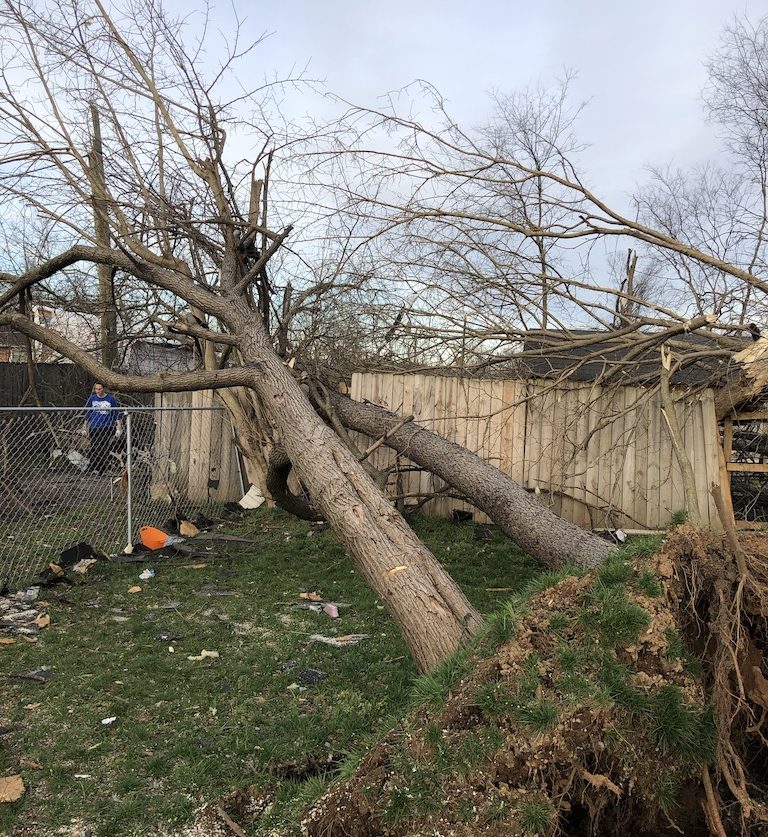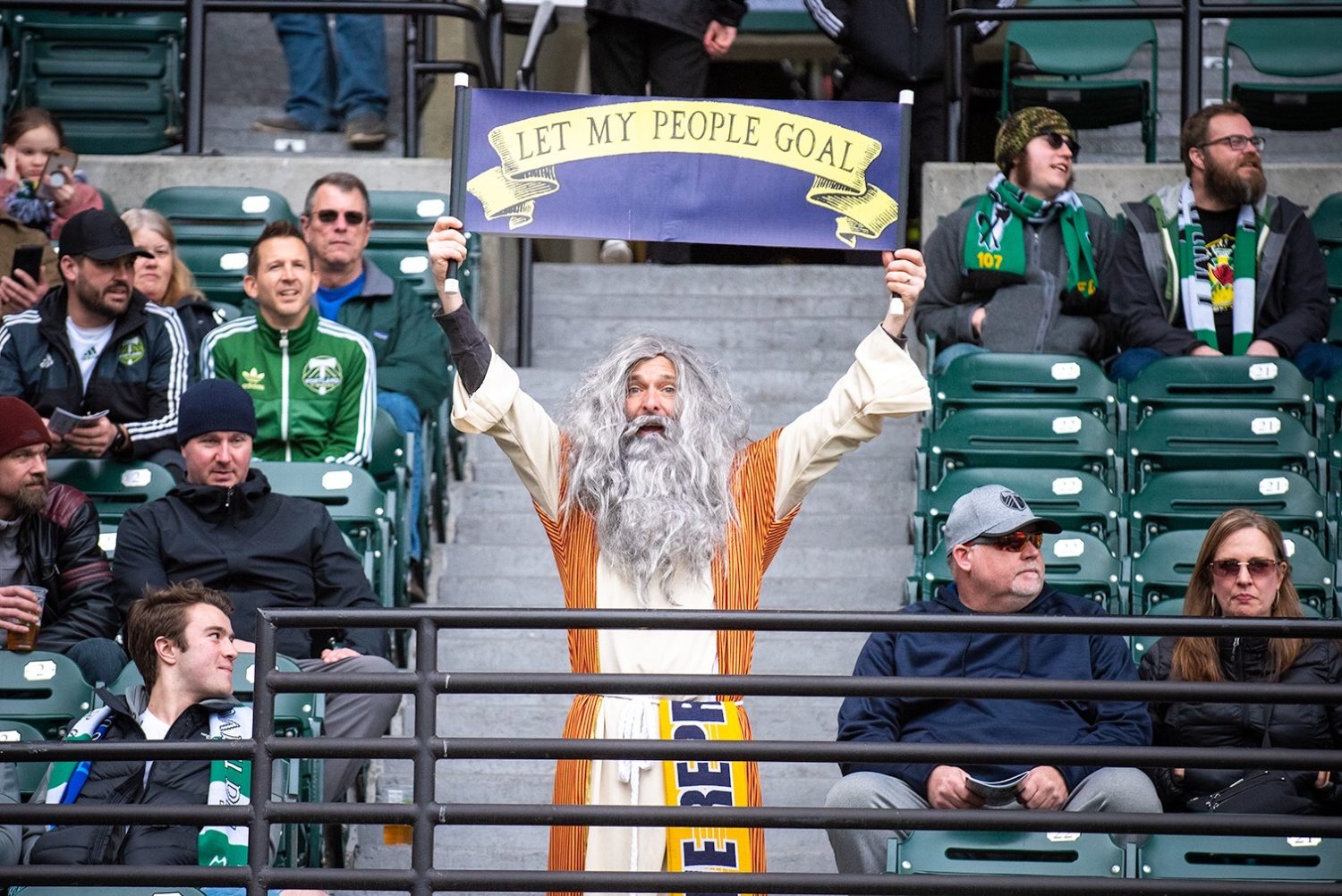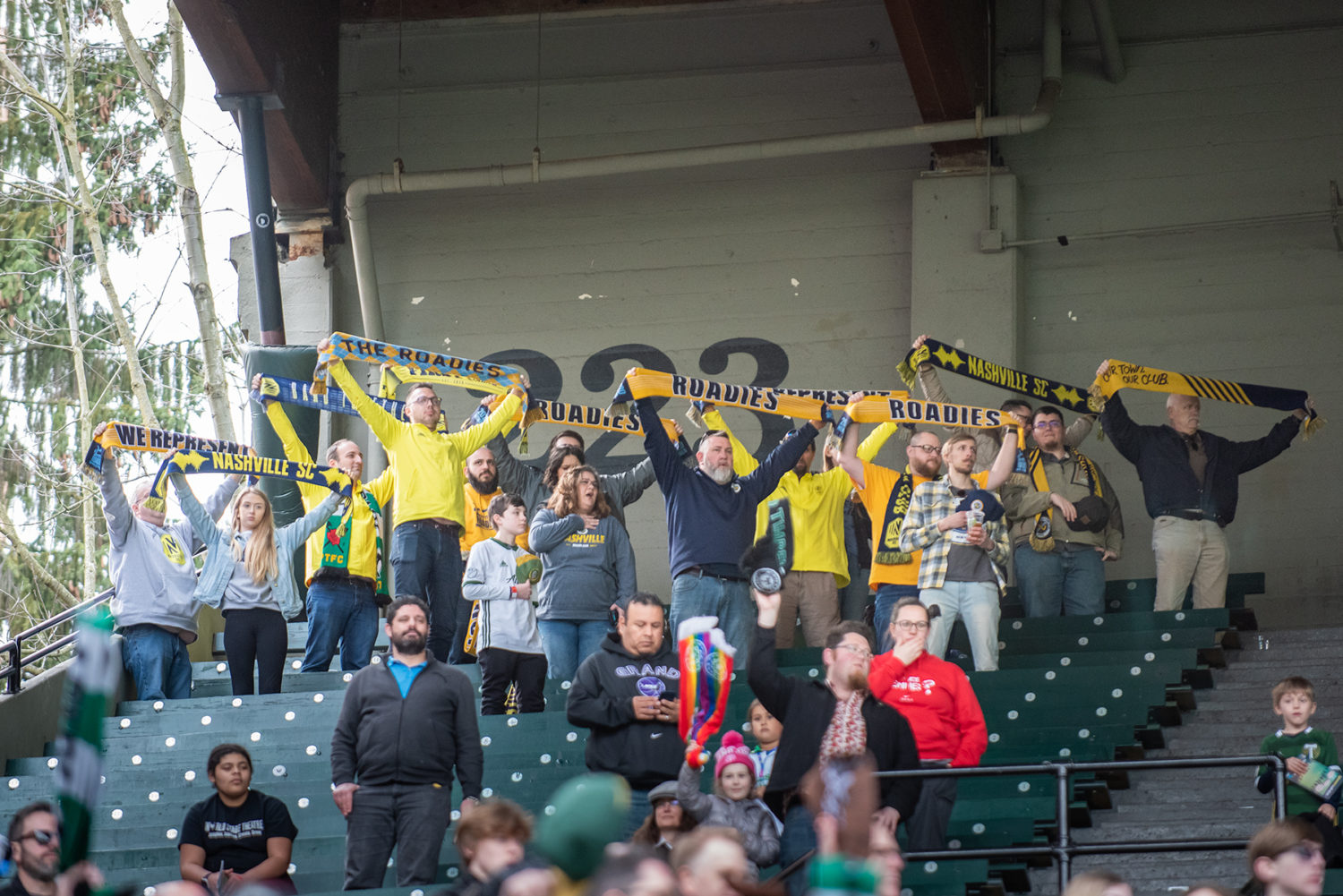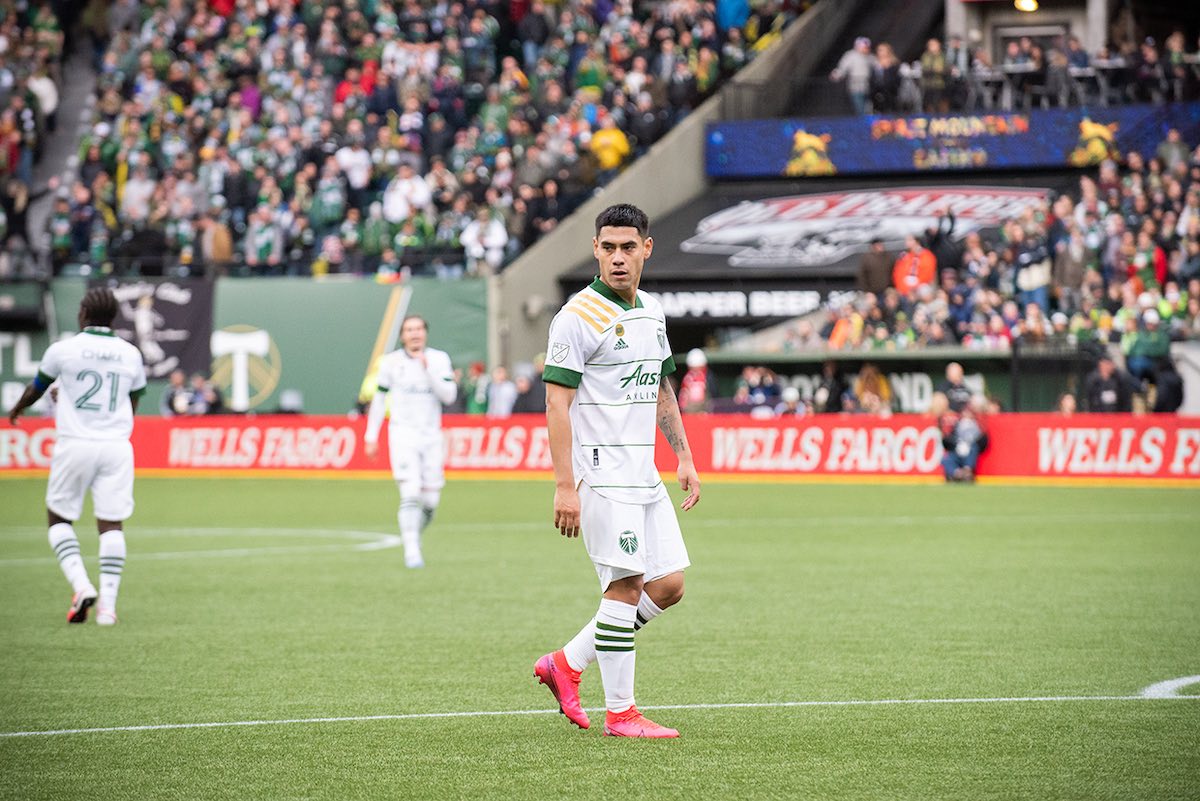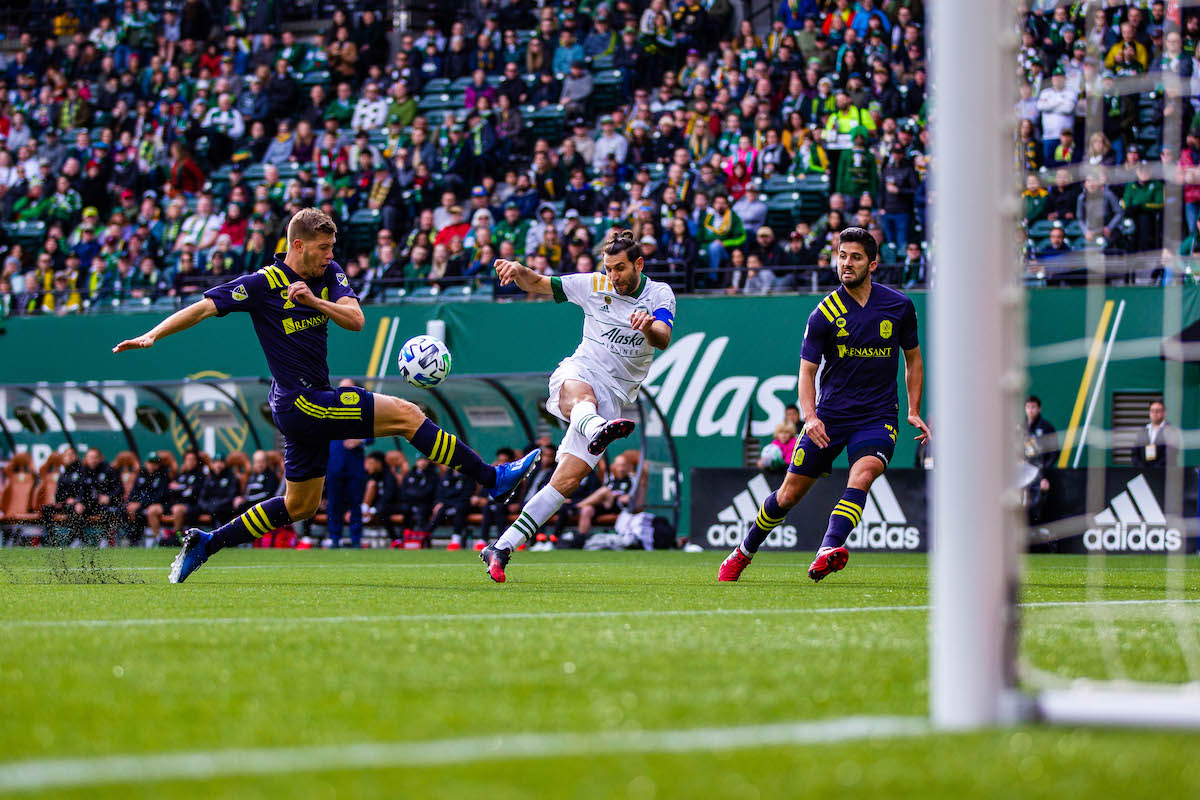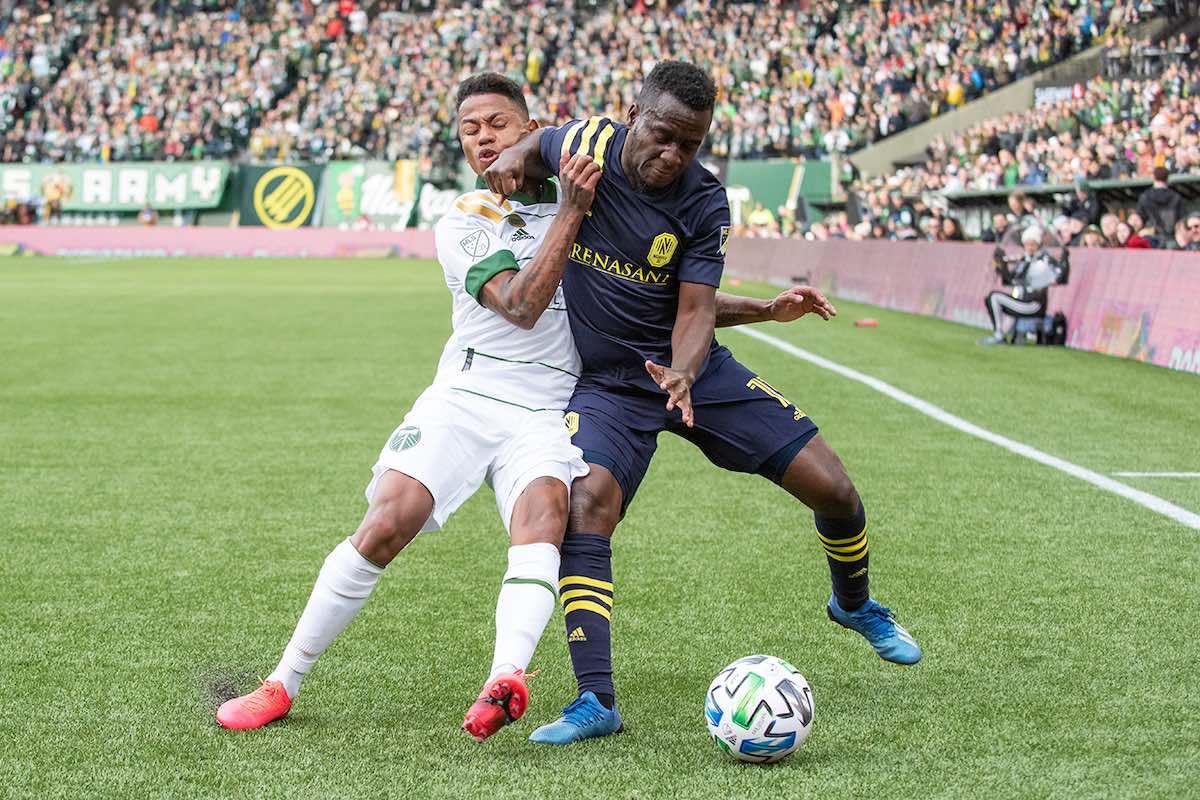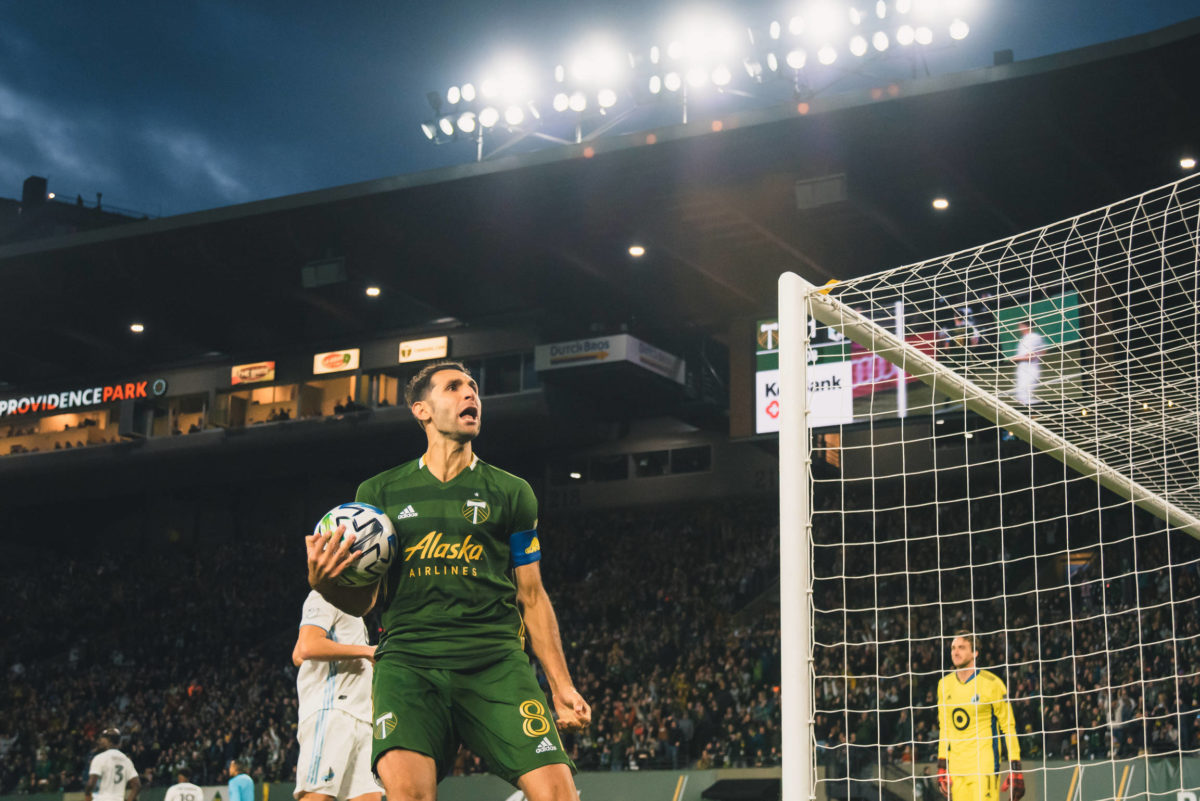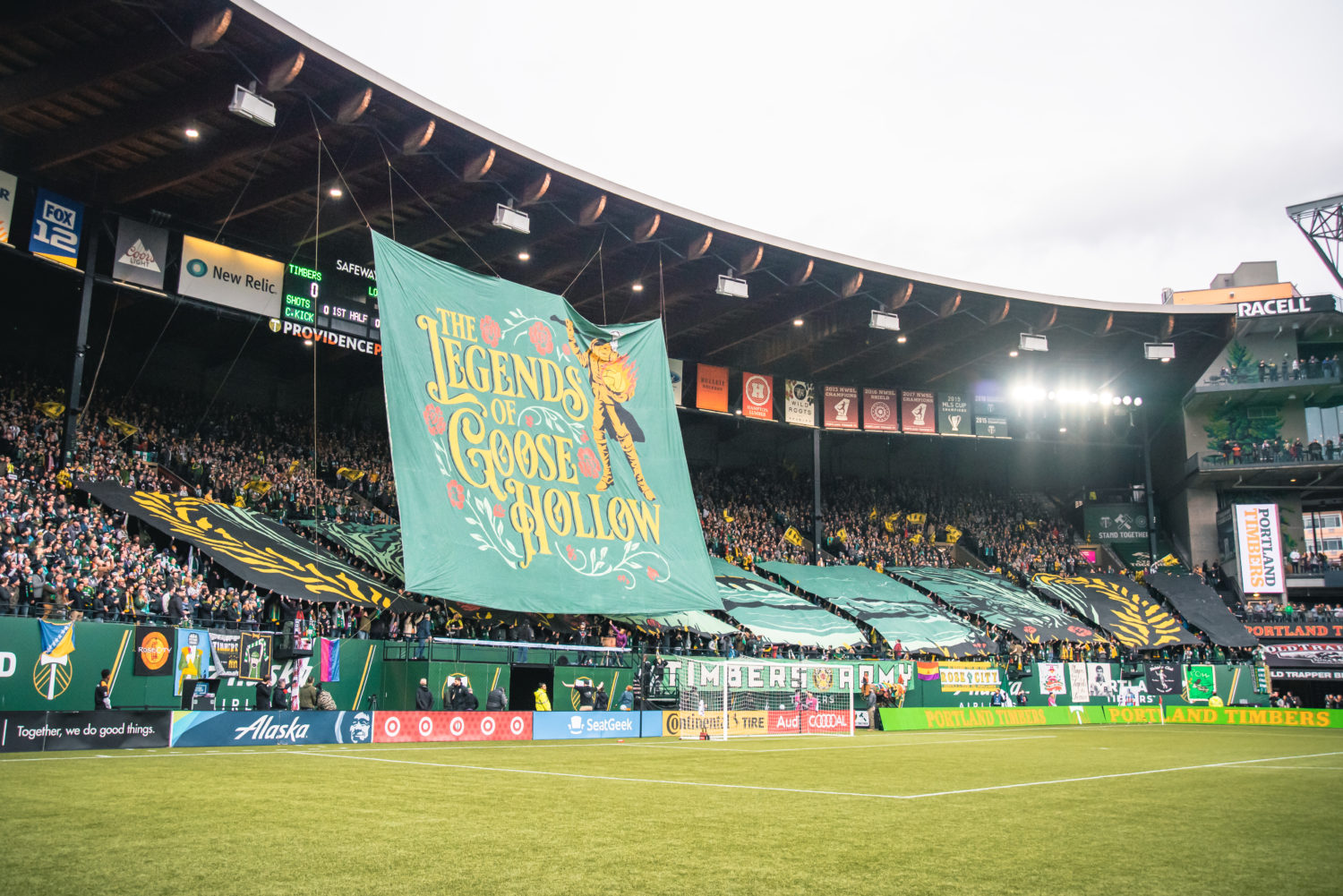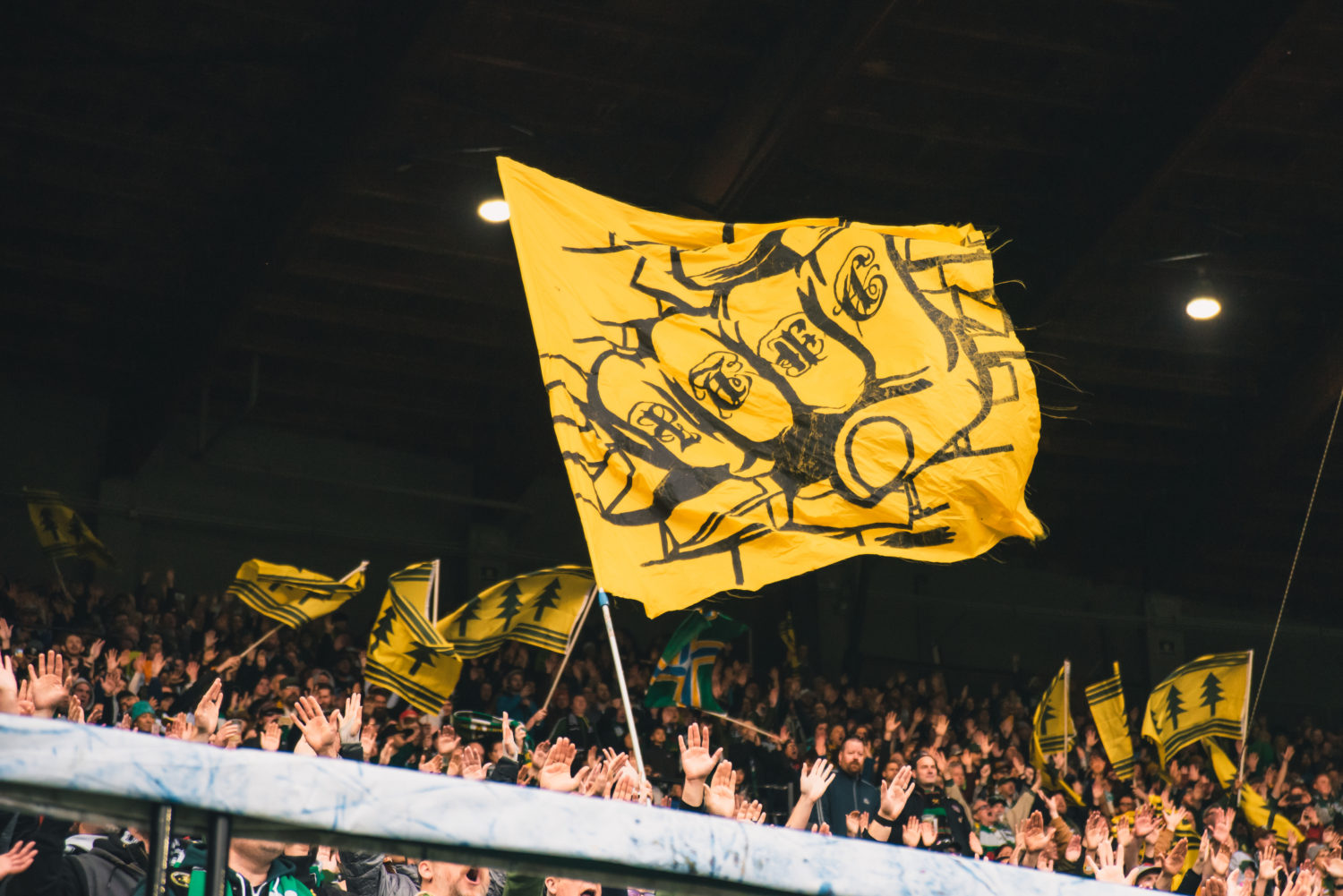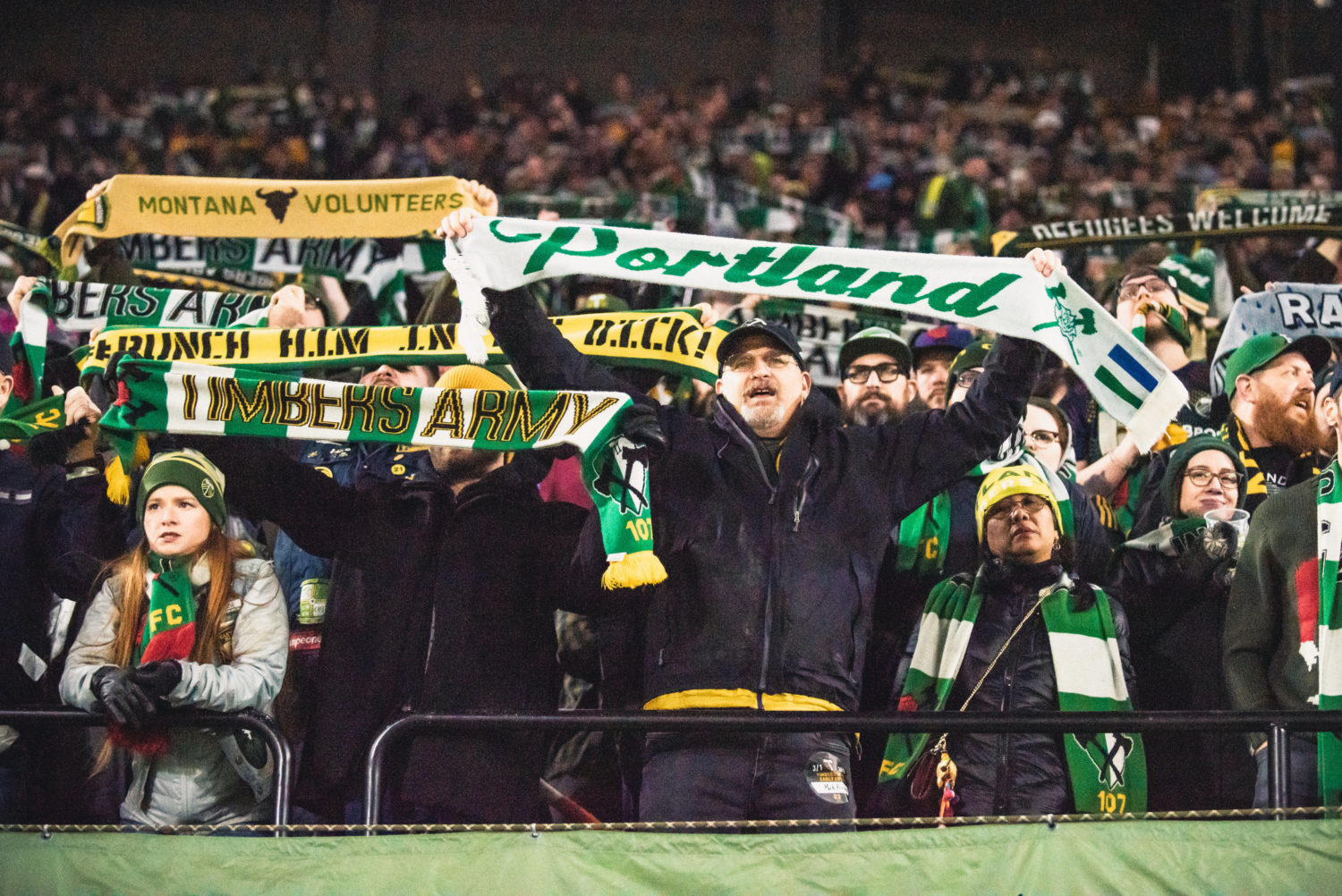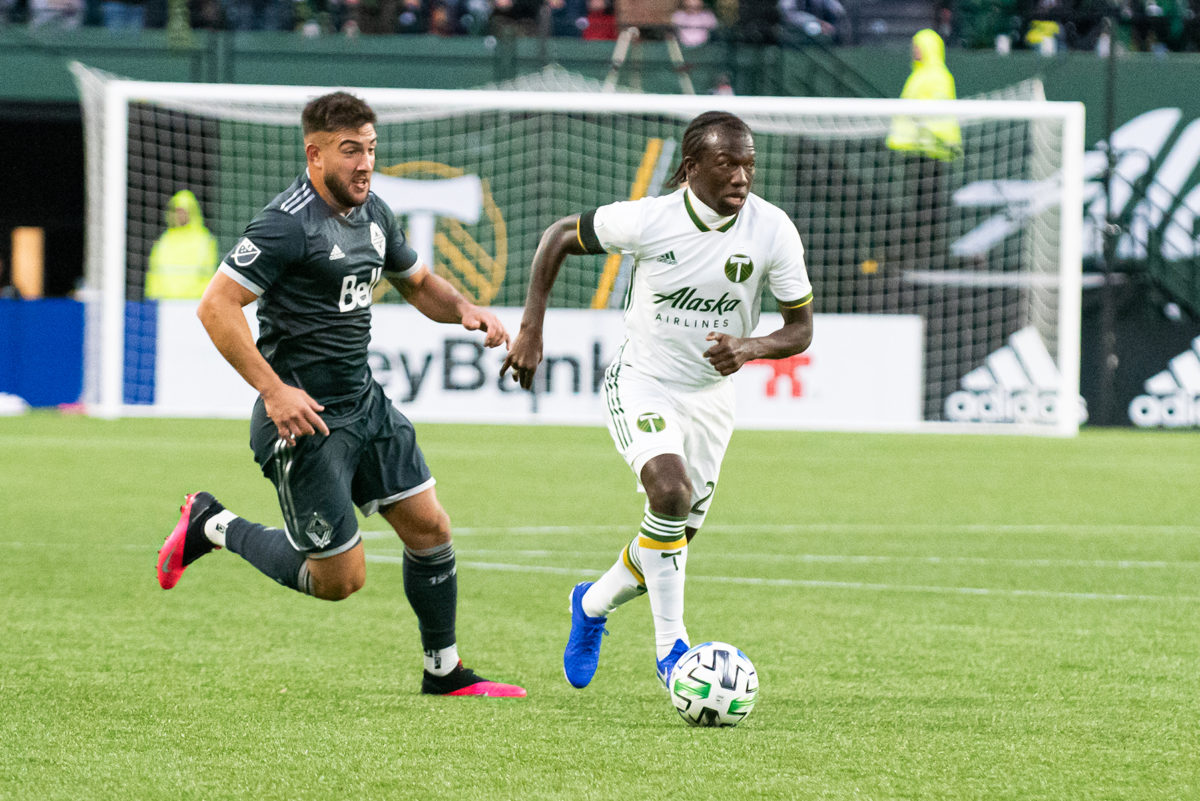I don’t think it will come as a surprise to anyone that, given the state of the world, I have been struggling to collect myself and write about the good, good game. Still, when the Timbers’ re-aired their first-ever Major League Soccer home game, I vowed to shake off the malaise that had settled over me and write something about it.
It didn’t go great.
I struggled to watch the game, let alone write about it, and as the hours passed with no movement I decided to record snippets of what was going through my head.
*
I can’t even think about soccer right now.
Attempts to think back about the beginning of the Timbers’ season are met in my mind by a white void, full of nothing but static and anxiety.
I try to focus on the Timbers’s second match of 2020—their last match before all this took hold—and I know it was a 1-0 win. As I try to summon the match more fully to mind I find myself staring at my gloved hands, still glistening with a sheen of evaporating alcohol from the wipe I just used to disinfect my desk after a co-worker borrowed my workstation.
“I’m not sick,” he said.
“That’s not how this works,” I replied, exasperated.
It eventually comes to me. Diego Valeri on the volley. Sixty minutes of compact, defensive soccer. A reasonable fear of Walker Zimmerman at the back post. Three points.
**
Executive Order No. 20-12 has been announced.
Work has slowed to a halt and I find myself listening to podcasts as I wait to see how many more people I have to interact with today. I clean and count product, losing myself in the repetition and in the podcasts that play through the one earbud I have in.
Every soccer podcast that I listen to has become a movie review podcast. It is fine.
***
When I get home I sit on the couch and time passes swiftly.
Hummus and pita as something flickers on the television.
I know should watch the rebroadcast Timbers game, their first home match since joining MLS. I should rouse myself. I should write something.
More sitting. More screens.
Tonight, this is as close as I get.
****
I remember Jorge Perlaza’s goal.
Not so much the goal itself, although through repeated viewing over the last ten years it has been seared into my mind, but my feelings at the moment that it occurred.
Standing in the North End, drunk, after hours in line. Waving a flag too long. The rain.
The wild elation when Perlaza slots past Sean Johnson. Jumping up and down like a maniac. Hugging my best friend on one side. Hugging a stranger on the other.
*****
It is two days later and I am finally watching the match. My eyes are heavy from a combination of stress and allergies, but as the game begins I perk up.
I like this team. Captain Jack. Kenny Fucking Cooper. Futty. Rodney. Kalif.
But it is not just the RCTID folk heroes that bring a smile to my face. There is future Chivas USA survivor Steve Purdy; rock-solid Eric Brunner, whose career was cut short by concussions; and Jorge, the Timbers’ first Colombian.
Even James “Non-soccer Reasons” Marcelin and Jeremy “no-nickname-found” Hall warm my heart.
******
Ten minutes in and Cooper is dancing around Chicago players as though he weighed no more than a feather. This is the Kenny Cooper that we forget.
Moments later that dribbling has lead to nothing as Cooper fires a shot or a pass or maybe just an ill-timed muscle spasm off the leg of a defender and up into the air. This is the Kenny Cooper that we remember.
*******
Twenty-five minutes in and I am struck by how comforting it is to have a team full of imposing players.
In the 2011 home opener, the Timbers starting XI averaged just over 6’1”. In the 2020 home opener, the Timbers starting XI averaged a smidge over 5’10”.
The difference is stark on every contested header.
********
Twenty-nine minutes in and the goal comes. It is everything I wanted it to be.
Rodney to Kalif to Jorge. Cut inside. Pass the ball into the net.
I watch the cameras panning over wildly celebrating fans and pick out my best friend, waving a scarf in the air. He is just on the edge of the screen, but I can still make him out and I can tell that the one arm projecting from behind a waving flag: that is me.
*********
Thirty-one minutes in and Timber Joey is cutting his first slab off the log in the MLS era. Except, it looks like it might turn out to be a wedge rather than a slab.
**********
Thirty-eight minutes in and Rodney Wallace scores the goal that should have announced his presence to everyone in the North End. But in 2011 Rodney was playing left back and we all knew that left back goals are not repeatable.
***********
Forty-seven minutes in and Jorge Perlaza has scored his second goal of the night. He will go on to score only four more for the Timbers before being traded away midway through the 2012 season.
That is a bummer.
My god, it is raining hard.
************
Sixty-five minutes in and Kalif Alhassan looks so much worse than I remember.
He has so very many ideas and so little chance at executing them. Here he takes a shot on the volley that if he could connect with it would instantly be in the running for the best goal a Timbers player has ever scored. (Sorry, Darlington. Sorry, Diego.) But he never connects.
*************
Eighty-one minutes in and Marco Pappa scores that goal that Kalif wishes he had scored.
Pappa would go on to score once more against the Timbers: two years later for the Seattle Sounders during the Timbers’ abysmal 2014 season.
**************
Eighty-four minutes in and Futty scores the most 2011 Timbers goal possible: a flailing, stumbling, possibly double hand-ball that somehow emerged from the midst of no less than five defenders to end up over the line.
That is the 2011 that I remember.
***************
Eighty-seven minutes in and Darlington Nagbe has been on the pitch for several minutes now. He is only 20. He looks so little as the Timbers Army chant “Fools Rush In”.
****************
Ninety minutes in and the Timbers Army are singing “Tetris” but they are not Tetris-ing. This makes sense as Tetris-ing was not yet a thing in 2011, but there remains something strange about not seeing a mass of people bouncing back and forth as the song is sung.
The little differences like this are adding up. 2011 was a long time ago.
*****************
The game is over and I am left with a little bit of sadness.
In a year’s time, this team would be largely unrecognizable going into the hellmouth that was the 2012 season. And by the end of that year, only a handful of the players that were there at the beginning would remain. Now not a single player from the 2011 Timbers home opener is still on the roster.
The first years of every expansion team are full of upheaval. Everything comes and goes as the club struggles to figure out who they are.
In April of 2011 the Timbers were a team fueled by the crowd and the rain and the smell of fresh sawdust.

